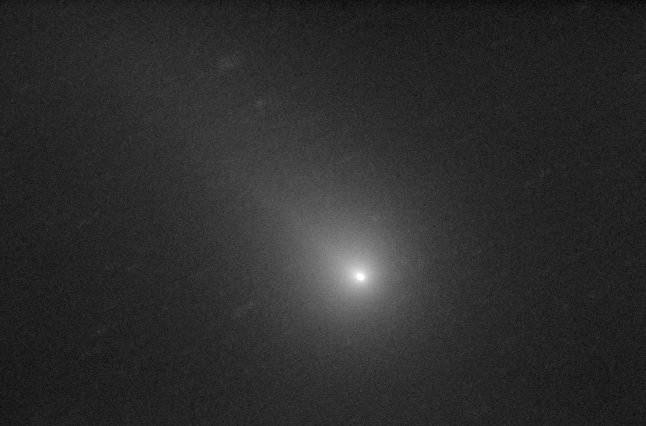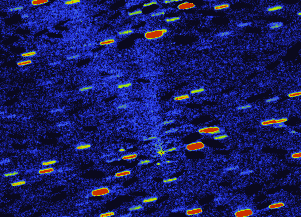
Gianluca Masi,
I've been thinking about this experiment for weeks and finally I had a chance to try it. I followed comet C/2001 A2 last summer, getting several frames each observing night. Because of the comet proper motion, I had to align them respect to the comet, before to add them. Of course, stars looked like pointed trails, often disturbing the comet image. I was wondering if there was a way to limit the star interference.
As an observer doing a lot of CCD photometry, I deal with night-sky flat fields almost every time I observe. To build this kind of flats, you have to use a special technique, median combining many frames of different sky fields. Median combining is different from meaning: consider the following numbers 0, 220, 230, 240, 250, 260, 1500. The mean value is 385.7, while the median is 240. If those numbers are relative to measures of something you don't expect to vary a lot, the first and the last values (0 and 1500) are clearly bad, probably an artifact. If you decide to condense the results by meaning, you are actually getting a wrong result, dominated by the bad values. Median combining uses a different approach: values are looked in increasing order, and the central element of the resulting "chain" is retrieved.
I used this technique to creat a new image of comet C/2001 A2. I had 5 frames (taken on 13 July 2001). First of all, I scaled them to have similar background values (this is a key-step, in order to have the whole procedure able to extract the "central value" I explained above). Then, they have been aligned respect to the comet, as usual. The resulting frames have been median combined. Because of the comet proper motion, each star sits in a different position in each comet-centered image so, in this set of frames, it never hits the same group of pixel. This means that the median tends to cancel out the stars, as it founds the backbround as the "central element". The final image, in fact, shows very little interference of stars, with a delicate vision of the comet. To work, you need an appropiate number of frames. Also the comet has to move significantly over the span of time you covered.
I did the same for 5 frames grabbed on 12 July 2001 and the result is posted below.
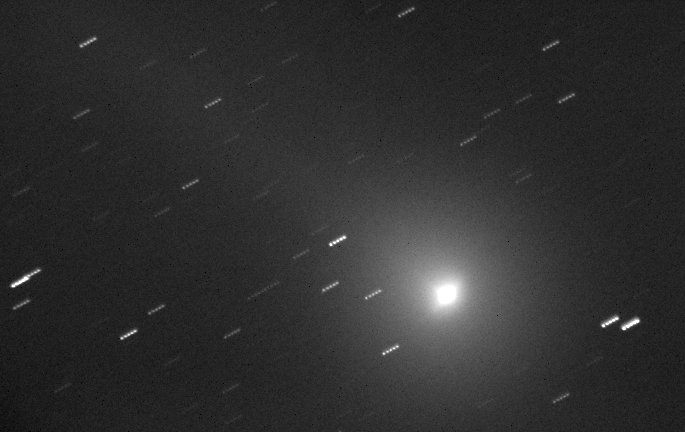
The original image (13 July 2001): the frames have been simply centered and added.
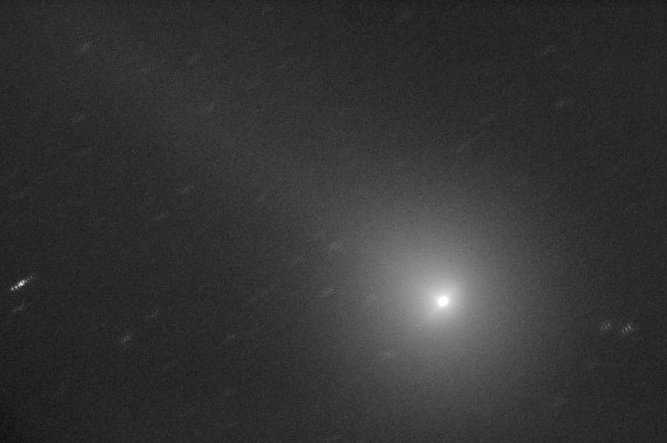
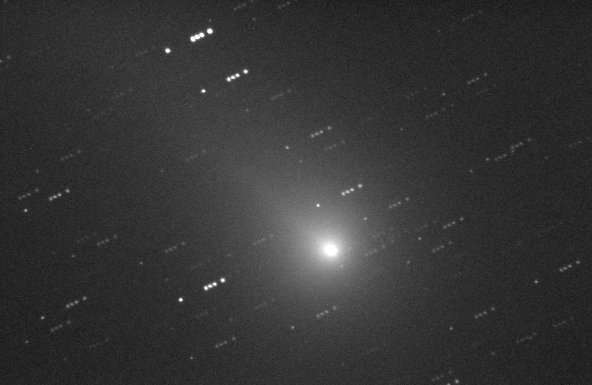
The original image (12 July 2001): the frames have been simply centered and added.
